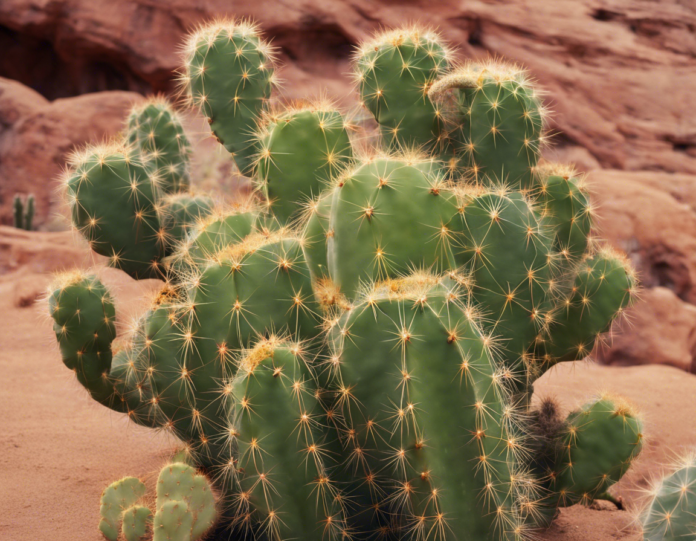Deserts are harsh environments characterized by extreme temperatures, scarce water availability, and limited nutrients. In such challenging conditions, the ability to thrive and survive is essential for any organism. One of the most fascinating examples of adaptation to desert life is the cactus. Contrary to popular belief, cacti are not a monolithic group of plants but belong to the family Cactaceae, comprising over 1,700 species.
Adaptations of Cacti to Desert Environments
Cacti have evolved numerous adaptations that enable them to thrive in deserts:
1. Succulent Stem: One of the most distinctive features of cacti is their succulent stems, which store water to survive long periods of drought. The thick, fleshy stems allow cacti to absorb and store water efficiently.
2. Reduced Leaves: To minimize water loss through transpiration, cacti have evolved reduced and modified leaves called spines. These spines also protect the plant from herbivores and provide shade to reduce water loss.
3. CAM Photosynthesis: Most plants open their stomata during the day to take in CO2 for photosynthesis, leading to water loss through transpiration. Cacti, however, perform CAM (Crassulacean Acid Metabolism) photosynthesis, opening their stomata at night to take in CO2 and storing it for daytime photosynthesis, reducing water loss.
4. Shallow, Widespread Roots: Cacti have shallow but extensive root systems that quickly absorb water after rain events. These roots spread out to maximize water uptake from rare precipitation events.
5. Waxy Coating: The outer layer of cactus stems is covered in a waxy coating that helps prevent water loss through evaporation and reflects excess sunlight, reducing heat absorption.
6. Nocturnal Flowering: Many cacti species bloom at night to take advantage of cooler temperatures and higher humidity, reducing water loss during the flowering process.
7. Thermal Regulation: Cacti have the ability to regulate their temperature by changing the orientation of their stems to minimize exposure to intense sunlight, thus reducing water loss through transpiration.
Significance of Cacti in Desert Ecosystems
Cacti play crucial roles in desert ecosystems:
1. Water Source: The water stored in cactus stems serves as a vital resource for desert animals, including birds, rodents, and insects, especially during dry periods.
2. Shelter: The dense, spiny structures of cacti provide shelter and refuge for a variety of desert creatures, offering protection from predators and extreme heat.
3. Soil Stabilization: Cacti help prevent soil erosion in desert habitats by anchoring the soil with their extensive root systems and reducing water runoff.
4. Biodiversity: Cacti support a diverse range of species, including pollinators like bats and insects, that rely on cacti for food and habitat.
Conservation Challenges
Despite their remarkable adaptations, cacti face numerous challenges in their natural habitats:
1. Habitat Loss: Human activities such as urbanization, agriculture, and infrastructure development have led to the destruction of cactus habitats, threatening many species with extinction.
2. Illegal Trade: Cacti are often illegally collected and traded in the horticultural market, putting additional pressure on wild populations.
3. Climate Change: Shifts in precipitation patterns, increasing temperatures, and more frequent extreme weather events due to climate change pose a significant threat to cacti survival.
4. Invasive Species: Non-native plant species can outcompete native cacti for resources, disrupt pollination patterns, and alter ecosystem dynamics in desert environments.
5. Overgrazing: Intensive grazing by livestock can damage cacti populations, reducing their ability to reproduce and survive in their natural habitats.
FAQs (Frequently Asked Questions)
1. How do cacti survive without water for long periods?
Cacti store water in their succulent stems, which allows them to survive extended periods of drought by efficiently utilizing stored water.
2. Why do cacti have spines instead of leaves?
Cacti have spines instead of leaves to minimize water loss through transpiration and protect the plant from herbivores in harsh desert environments.
3. Can all cacti survive freezing temperatures?
While most cacti are adapted to warm desert environments, some species can tolerate freezing temperatures by acclimating to cold conditions or seeking shelter.
4. Do cacti need direct sunlight to survive?
Cacti thrive in sunny locations, as they require sunlight for photosynthesis, but some species can tolerate partial shade depending on their adaptations.
5. How long do cacti typically live in the wild?
Cacti have varying lifespans depending on the species, with some living for several decades or even centuries in their natural habitats.
In conclusion, cacti exemplify the remarkable ability of plants to adapt to extreme environmental conditions. Their unique adaptations not only allow them to survive in harsh deserts but also play essential roles in desert ecosystems. However, ongoing conservation efforts are crucial to protect these iconic plants and the diverse habitats they inhabit from various threats and ensure their long-term survival.








